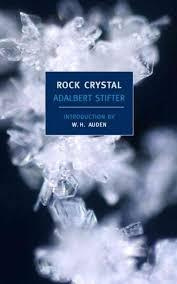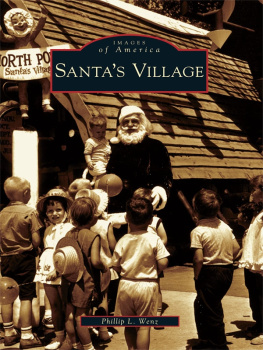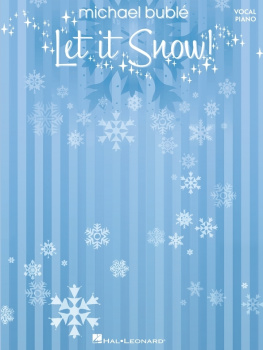ROCK CRYSTAL (1846)
TRANSLATED BY LEE M. HOLLANDER, PH.D.
.jpg)

Among the high mountains of our fatherland there lies a little village with a small but very pointed church-tower which emerges with red shingles from the green of many fruit-trees, and by reason of its red color is to be seen far and away amid the misty bluish distances of the mountains. The village lies right in the centre of a rather broad valley which has about the shape of a longish circle. Besides the church it contains a school, a townhall, and several other houses of no mean appearance, which form a square on which stand four linden-trees surrounding a stone cross. These buildings are not mere farms but house within them those handicrafts which are indispensable to the human race and furnish the mountaineers with all the products of industry which they require. In the valley and along the mountain-sides many other huts and cots are scattered, as is very often the case in mountain regions. These habitations belong to the parish and school-district and pay tribute to the artisans we mentioned by purchasing their wares. Still other more distant huts belong to the village, but are so deeply ensconced in the recesses of the mountains that one cannot see them at all from the valley. Those who live in them rarely come down to their fellow-parishioners and in winter frequently must keep their dead until after the snows have melted away in order to give them a burial. The greatest personage whom the villagers get to see in the course of the year is the priest.
They greatly honor him, and usually he himself through a longer sojourn becomes so accustomed to the solitude of the valley that he not unwillingly stays and simply lives on there. At least, it has not happened in the memory of man that the priest of the village had been a man hankering to get away or unworthy of his vocation.
No roads lead through the valley. People use their double-track cart-paths upon which they bring in the products of their fields in carts drawn by one horse. Hence, few people come into the valley, among them sometimes a solitary pedestrian who is a lover of nature and dwells for some little time in the upper room of the inn and admires the mountains; or perhaps a painter who sketches the small, pointed spire of the church and the beautiful summits of the rocky peaks. For this reason the villagers form a world by themselves. They all know each other by name and their several histories down from the time of grandfather and great-grandfather; they all mourn when one of them dies; know what name the new-born will receive; they have a language differing from that of the plains; they have their quarrels, which they settle among themselves; they assist one another and flock together when something extraordinary has happened.
They are conservative and things are left to remain as they were. Whenever a stone drops out of a wall, the same stone is put back again, the new houses are built like the old ones, the dilapidated roofs are repaired with the same kind of shingles, and if there happen to be brindled cows on a farm, calves of the same color are raised always, so that the color stays on the farm.
To the south of the village one sees a snow-mountain which seems to lift up its shining peaks right above the roofs of the houses. Yet it is not quite so near. Summer and winter it dominates the valley with its beetling crags and snowy sides. Being the most remarkable object in the landscape, this mountain is of main interest to the inhabitants and has become the central feature of many a story.
There is not a young man or graybeard in the village but can tell of the crags and crests of the mountain, of its crevasses and caves, of its torrents and screes, whether now he knows it from his own experience or from hearsay. The mountain is the boast of the villagers as if it were a work of theirs and one is not so sure, however high one may esteem the plain-spokenness and reputation for truth-telling of the natives, whether they do not fib, now and then, to the honor and glory of their mountain. Besides being the wonder of the valley, the mountain affords actual profit; for whenever a company of tourists arrives to ascend the mountain the natives serve as guides; and to have been a guide, to have experienced this or that, to know this or that spot, is a distinction every one likes to gain for himself. The mountain often is the object of their conversation at the inn, when they sit together and tell of their feats and wonderful experiences; nor do they omit to relate what this or that traveler had said and what reward they had received from him for their labor. Furthermore, the snowy sides of the mountain feed a lake among its heavily forested recesses, from which a merry brook runs through the valley, drives the saw-mill and the flour-mill, cleanses the village and waters the cattle. The forests of the mountain furnish timber and form a bulwark against the avalanches.
The annual history of the mountain is as follows: In winter, the two pinnacles of its summit, which they call horns, are snow-white and, when visible on bright days, tower up into the blackish blue of the sky in dazzling splendor, and all its shoulders are white, too, and all slopes. Even the perpendicular precipices, called walls by the natives, are covered with white frost delicately laid on, or with thin ice adhering to them like varnish, so that the whole mass looms up like an enchanted castle from out of the hoary gray of the forests which lie spread out heavily about its base. In summer, when the sun and warm winds melt the snow from their steep sides, the peaks soar up black into the sky and have only beautiful veins and specks of white on their flanksas the natives say. But the fact is, the peaks are of a delicate, distant blue, and what they call veins and specks is not white, but has the lovely milk-blue color of distant snow against the darker blue of the rocks. When the weather is hot, the more elevated slopes about the peaks do not lose their covering of eternal snow. On the contrary it then gleams with double resplendence down upon the green of the trees in the valley; but the winter's snow is melted off their lower parts. Then becomes visible the bluish or greenish iridescence of the glaciers which are bared and gleam down upon the valley below. At the edge of this iridescence, there where it seems from the distance like a fringe of gems, a nearer view reveals confused masses of wild and monstrous boulders, slabs, and fragments piled up in chaotic fashion. In very hot and long summers, the ice-fields are denuded even in the higher regions, and then a much greater amount of blue-green glacier-ice glances down into the valley, many knobs and depressions are laid bare which one otherwise sees only covered with white, the muddy edge of the ice comes to view with its deposit of rocks, silt, and slime, and far greater volumes of water than usual rush into the valley. This continues until it gradually becomes autumn again, the waters grow less, and one day a gray continuous gentle rain spreads over all the valley. Then, after the mists have dispersed about the summits, the mountain is seen to have draped itself again in its soft robe of snow, and all crags, cones, and pinnacles are vested in white. Thus it goes on, year after year, with but slight divergences, and thus it will go on so long as nature remains the same, and there is snow upon the heights and people live in the valleys. But to the natives these changes seem great, they pay much attention to them and calculate the progress of the seasons by them.
Next page










.jpg)
